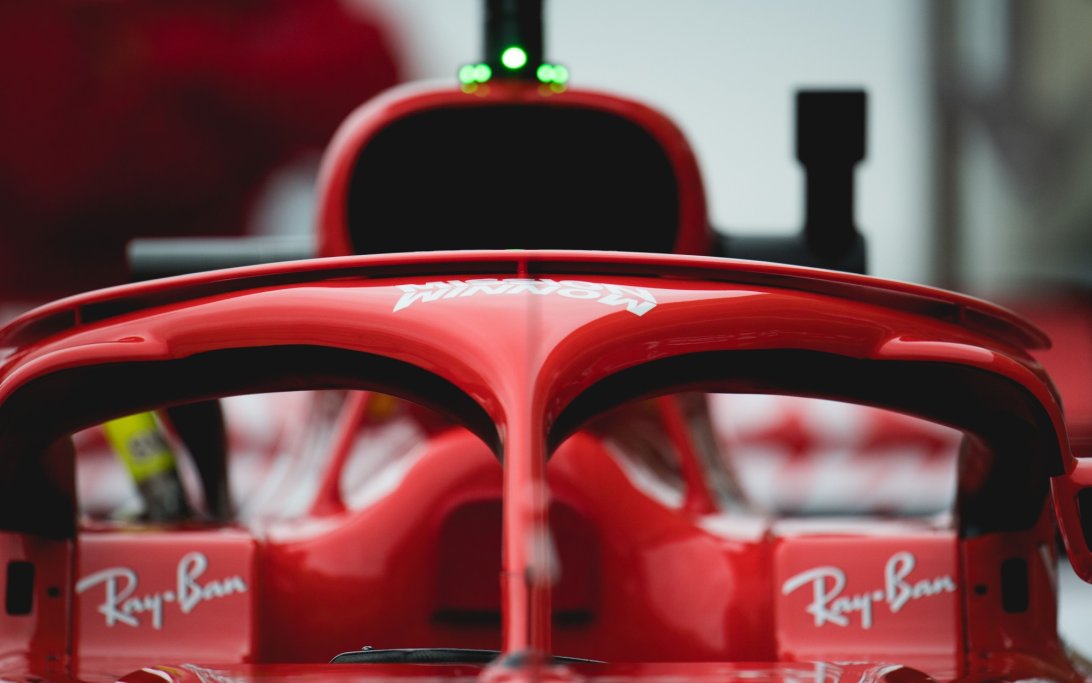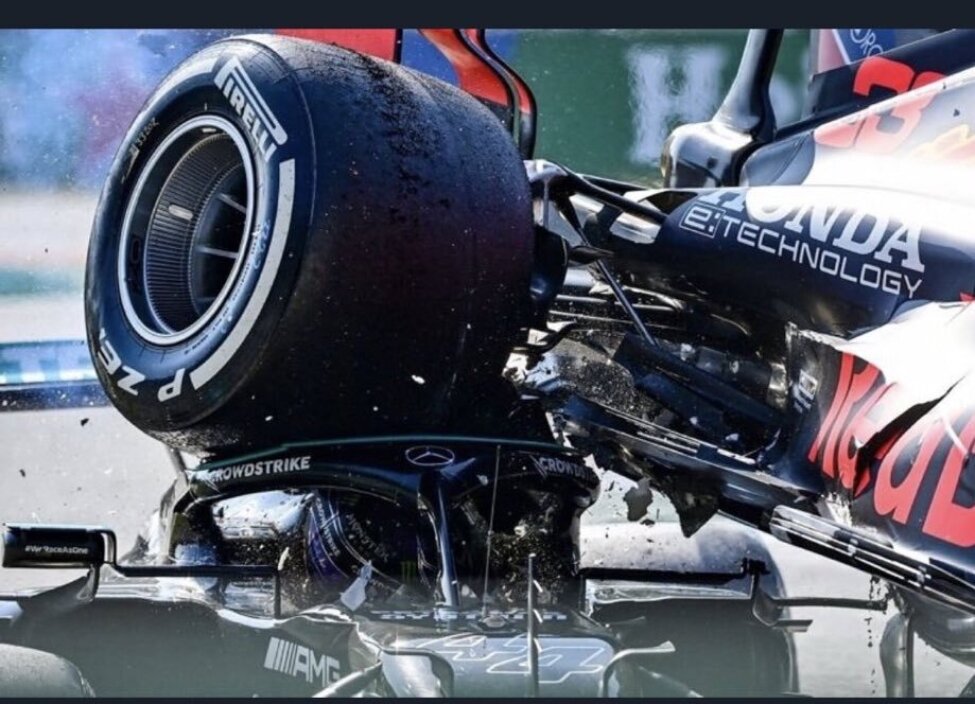What is the halo in F1?
The halo was introduced in F1 in 2018 to improve the safety of the driver in the cockpit. You can read all about this important safety measure here.

What is a halo in F1?
A halo is an important safety device on the F1 car designed to improve driver protection. The halo is a kind of bracket made of grade 5 titanium placed on the cockpit and is meant to prevent objects from landing on the driver. The structure of the halo consists of a bar that surrounds the head of an F1 driver at three points: one in front of the driver and two connected to the front from both sides. This could, for example, be loose flying debris or another Formula 1 car coming over the driver. A halo is so strong that it can handle a total weight of about 12,000 kilograms, while the halo itself only weighs approximately 7 kilograms.
Since the introduction of the halo in F1, the safety of drivers has increased significantly. Many times, the halo has spared drivers from injuries or even fatal incidents, which we will discuss later in this article. Did you know the halo was actually invented by Mercedes? Below, you'll find a more detailed explanation of the F1 halo by James Allison.
when was the halo introduced in f1
The first ideas for cockpit protection emerged in 2014. There was a great need for more protection in the cockpit of a F1 car, after a number of violent accidents had already occurred. Jules Bianchi, for example, collided with a crane at the 2014 Japanese Grand Prix. The impact was so great that his helmet was ripped off his head and he suffered serious head injuries. He died nine months later as a result of his injuries.
Beside this sad incident, quite a lot of other incidents happend in F1 with fatal results or serious injuries, which could have been prevented. This resulted in the halo finally being introduced in 2018 in Formula One to improve the safety of the drivers. Formula 1 teams, incidentally, are not allowed to produce the halo themselves. The halo is supplied by three third-party manufacturers approved by the FIA, and all have to meet identical requirements
Visibility before and after the F1 halo
In the video below, you can view the visibility with the halo compared to the visibility without a halo.
Opposition to the halo in F1
In the early stages, the halo received a lot of criticism for its 'ugly' appearance. For example, the halo was called a 'toe slipper' because it looked a lot like that. Formula 1 is always evolving and the appearance of the halo has also become a bit nicer over the years. There is no arguing about taste, by the way.
Another bonus is that the halo offers more space for sponsorship. Flip-flop brand 'Gandys' was quick to capitalise on the halo's nickname. During the Australian Grand Prix, this brand was featured on the halo of the McLarens.
Reduced visibility due to halo
The visibility of Formula 1 drivers was also reportedly reduced, several drivers reported. However, Valtteri Bottas refuted this point of view, stating that he quickly got used to it. Later, the F1 drivers admitted that they barely noticed the halo anymore while they were focused during a session, and the reduction of their vision wasn't overly annoying.
The halo has proven itself
In theory, the chance of an accident with fatal consequences is 17% lower with a halo and in practice, the safety measure has been proven indispensable on several occasions.
For example, the halo saved Romain Grosjean's life during his violent crash in Bahrain in 2020, sending him under the crash barrier. The halo caused the barrier to be pushed up a lot, allowing Grosjean to fit between them.
In 2022, the halo was also indispensable during Guanyu Zhou's crash in Silverstone. He flew over several times and landed upside down with his Alfa Romeo behind the tyre stacks between the fence and the crash barrier. Fortunately, he was able to get out of the car unharmed, thanks in part to the halo.
Despite the criticism and resistance to the introduction of the halo, the safety measure is now being praised. The halo saves lives.
Can F1 drivers see through a halo?
How is the F1 halo so strong?
Why did F1 oppose the halo?
How much force can a F1 halo withstand?
Don't miss out on any of the Formula 1 action thanks to this handy 2026 F1 calendar that can be easily loaded into your smartphone or PC.
Download the calender